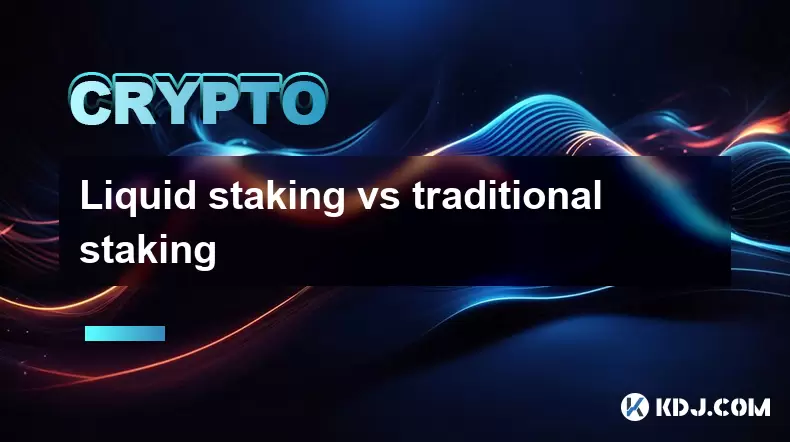-
 Bitcoin
Bitcoin $119000
0.17% -
 Ethereum
Ethereum $3664
-2.12% -
 XRP
XRP $3.229
-7.77% -
 Tether USDt
Tether USDt $1.001
0.02% -
 BNB
BNB $783.2
-1.48% -
 Solana
Solana $191.3
-5.26% -
 USDC
USDC $1.000
0.03% -
 Dogecoin
Dogecoin $0.2450
-7.74% -
 TRON
TRON $0.3115
-1.61% -
 Cardano
Cardano $0.8229
-6.80% -
 Hyperliquid
Hyperliquid $44.17
-2.93% -
 Stellar
Stellar $0.4343
-7.23% -
 Sui
Sui $3.792
-4.09% -
 Chainlink
Chainlink $18.38
-5.73% -
 Hedera
Hedera $0.2491
-7.79% -
 Bitcoin Cash
Bitcoin Cash $518.1
-1.51% -
 Avalanche
Avalanche $24.13
-5.84% -
 Litecoin
Litecoin $113.9
-5.41% -
 UNUS SED LEO
UNUS SED LEO $8.974
-0.21% -
 Shiba Inu
Shiba Inu $0.00001400
-7.98% -
 Toncoin
Toncoin $3.215
-2.09% -
 Ethena USDe
Ethena USDe $1.001
0.03% -
 Polkadot
Polkadot $4.178
-6.84% -
 Uniswap
Uniswap $10.38
-3.05% -
 Monero
Monero $317.8
-1.85% -
 Bitget Token
Bitget Token $4.733
-1.94% -
 Pepe
Pepe $0.00001293
-8.20% -
 Dai
Dai $1.000
0.02% -
 Aave
Aave $292.8
-4.74% -
 Bittensor
Bittensor $430.1
-3.67%
Liquid staking vs traditional staking
Staking in crypto lets users earn rewards by locking coins to secure a blockchain, with options like traditional staking for simplicity or liquid staking for added DeFi flexibility and yield opportunities.
Jul 22, 2025 at 03:16 am

What Is Staking in the Cryptocurrency Ecosystem?
Staking refers to the process of actively participating in transaction validation on a proof-of-stake (PoS) blockchain. Instead of miners competing to solve complex puzzles as in proof-of-work systems, PoS blockchains rely on validators who are chosen based on the number of coins they hold and are willing to "stake" as collateral. Staking allows users to earn rewards for helping secure the network, similar to how miners earn rewards for validating transactions in PoW systems.
There are two primary methods of staking: traditional staking and liquid staking. Both aim to secure the network and provide users with passive income, but they differ significantly in flexibility, liquidity, and usability.
Understanding Traditional Staking
Traditional staking involves locking up a certain amount of cryptocurrency in a wallet or on a platform to support the operations of a blockchain network. During the staking period, these funds are illiquid, meaning they cannot be freely moved or used for other purposes.
- Users must choose a validator or delegate their stake to one.
- Funds are locked until the user decides to unstake, which may involve a waiting period.
- Rewards are typically distributed at regular intervals.
- Staked assets cannot be used for trading or lending while locked.
This method is straightforward and secure but lacks flexibility, especially for users who want to maintain liquidity while still earning staking rewards.
How Liquid Staking Works
Liquid staking is a more advanced and flexible alternative to traditional staking. Instead of locking assets without any utility, users who participate in liquid staking receive tokenized representations of their staked assets, often referred to as liquid staking tokens.
For example, on Ethereum, users who stake ETH via platforms like Lido or Rocket Pool receive stETH or rETH, which represent their staked ETH plus accrued rewards. These tokens can be freely traded, transferred, or used in DeFi protocols to generate additional yield.
- Users deposit assets into a liquid staking protocol.
- They receive a derivative token representing their stake.
- These tokens can be used across DeFi platforms for lending, borrowing, or liquidity provision.
- Users still earn staking rewards while maintaining liquidity.
This dual benefit of earning rewards and retaining liquidity makes liquid staking an attractive option for many crypto investors.
Key Differences Between Liquid Staking and Traditional Staking
While both methods contribute to network security and provide staking rewards, several factors differentiate liquid staking from traditional staking:
- Liquidity: Traditional staking locks up funds, while liquid staking provides fungible tokens that can be used elsewhere.
- Flexibility: With liquid staking, users can engage in other yield-generating activities, whereas traditional staking limits asset use.
- Centralization Risks: Some liquid staking platforms may centralize validator operations, increasing counterparty risk.
- Complexity: Liquid staking involves interacting with DeFi protocols, which can be more complex than traditional staking interfaces.
- Rewards Distribution: Both systems offer similar staking yields, but liquid staking may offer additional returns through DeFi usage.
These differences make each method suitable for different types of users. Risk-averse investors may prefer traditional staking, while yield-focused participants may lean toward liquid staking.
Security and Risks Involved in Each Method
Both traditional and liquid staking come with their own sets of risks:
- In traditional staking, the main risks are slashing and validator downtime. If a validator behaves maliciously or fails to perform duties, a portion of the staked assets can be slashed.
- In liquid staking, the risks are broader and include smart contract vulnerabilities, impermanent loss when providing liquidity, and potential depegging of staking derivatives.
Smart contract exploits are a major concern in liquid staking, as many platforms rely on complex DeFi integrations. Additionally, the price volatility of staking derivatives can impact the overall value of holdings.
Users must assess their risk tolerance and technical knowledge before choosing a staking method.
Use Cases and Practical Applications
Liquid staking is particularly popular in the DeFi ecosystem due to its composability. For instance:
- Users can stake ETH and receive stETH, which can then be deposited into Aave or Compound as collateral to borrow other assets.
- stETH can be used in liquidity pools on Uniswap or SushiSwap to earn trading fees and additional incentives.
- Some protocols offer yield aggregators that optimize returns by automatically shifting staked assets between different DeFi platforms.
Traditional staking, while less flexible, remains a preferred option for long-term holders who prioritize simplicity and security over additional yield opportunities.
FAQs
Q: Can I switch from traditional staking to liquid staking?
A: Yes, but it requires unstaking your assets first, which may involve a waiting period and potential penalties depending on the network.
Q: Are liquid staking tokens insured against loss?
A: Most liquid staking tokens are not insured, and their value depends on the underlying staked assets and the platform’s smart contract security.
Q: Is liquid staking available for all cryptocurrencies?
A: No, it's primarily available on major PoS networks like Ethereum, Solana, and Cosmos, and depends on the existence of liquid staking protocols for those chains.
Q: Do I need a special wallet for liquid staking?
A: You can use wallets that support DeFi interactions, such as MetaMask, Trust Wallet, or hardware wallets compatible with the liquid staking platform you choose.
Disclaimer:info@kdj.com
The information provided is not trading advice. kdj.com does not assume any responsibility for any investments made based on the information provided in this article. Cryptocurrencies are highly volatile and it is highly recommended that you invest with caution after thorough research!
If you believe that the content used on this website infringes your copyright, please contact us immediately (info@kdj.com) and we will delete it promptly.
- Rare Coins Alert: Could That £1 Coin Be Worth Over £500?
- 2025-07-24 14:30:12
- DOGE's Zero-Knowledge Leap: A Comeback Catalyst?
- 2025-07-24 14:30:12
- XRP, Solana, and Institutional Adoption: A New Era for Crypto?
- 2025-07-24 11:10:12
- Dogecoin, Remittix, and Crypto Protocols: The Evolution of Digital Finance
- 2025-07-24 10:50:12
- BlockDAG, Hedera, and Stellar: Charting the Course for Crypto's Future
- 2025-07-24 10:50:12
- BlockDAG's No-Vesting Edge: Can It Outpace Cardano's Price?
- 2025-07-24 11:10:12
Related knowledge

Understanding the composition of a liquid staking token's yield
Jul 20,2025 at 09:07am
What Is a Liquid Staking Token?A liquid staking token is a representative asset issued to users who stake their native cryptocurrency on a proof-of-st...

Is it better to stake directly or use a liquid staking service?
Jul 22,2025 at 08:21pm
Understanding the Basics of StakingStaking in the context of blockchain and cryptocurrency refers to the process of locking up digital assets to suppo...

What to do during an LST depeg event
Jul 20,2025 at 04:57pm
Understanding LST Depeg EventsAn LST (Liquid Staking Token) depeg event occurs when the token, which is typically pegged to the value of the underlyin...

Can you provide liquidity with liquid staking tokens?
Jul 22,2025 at 10:22am
Understanding Liquid Staking TokensLiquid staking tokens (LSTs) are derivative tokens that represent staked assets on a proof-of-stake (PoS) blockchai...

What are the best wallets for storing LSTs?
Jul 21,2025 at 03:14pm
Understanding LSTs and the Need for Secure StorageLSTs, or Liquid Staking Tokens, are derivative tokens representing staked assets on a blockchain. Wh...

Step-by-step guide to liquid staking on Solana
Jul 20,2025 at 06:42am
What is Liquid Staking on Solana?Liquid staking is a mechanism that allows users to stake their cryptocurrency while retaining liquidity through the i...

Understanding the composition of a liquid staking token's yield
Jul 20,2025 at 09:07am
What Is a Liquid Staking Token?A liquid staking token is a representative asset issued to users who stake their native cryptocurrency on a proof-of-st...

Is it better to stake directly or use a liquid staking service?
Jul 22,2025 at 08:21pm
Understanding the Basics of StakingStaking in the context of blockchain and cryptocurrency refers to the process of locking up digital assets to suppo...

What to do during an LST depeg event
Jul 20,2025 at 04:57pm
Understanding LST Depeg EventsAn LST (Liquid Staking Token) depeg event occurs when the token, which is typically pegged to the value of the underlyin...

Can you provide liquidity with liquid staking tokens?
Jul 22,2025 at 10:22am
Understanding Liquid Staking TokensLiquid staking tokens (LSTs) are derivative tokens that represent staked assets on a proof-of-stake (PoS) blockchai...

What are the best wallets for storing LSTs?
Jul 21,2025 at 03:14pm
Understanding LSTs and the Need for Secure StorageLSTs, or Liquid Staking Tokens, are derivative tokens representing staked assets on a blockchain. Wh...

Step-by-step guide to liquid staking on Solana
Jul 20,2025 at 06:42am
What is Liquid Staking on Solana?Liquid staking is a mechanism that allows users to stake their cryptocurrency while retaining liquidity through the i...
See all articles

























































































